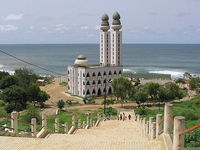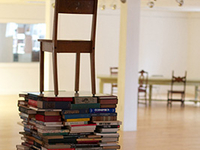Reflecting on the sociological dimension of the Senegalese education system is an opportunity for a comprehensive and systematic analysis. The aim is to show the strengths and weaknesses of its structure and functioning from the colonial era to the present day and to identify its prospects. Here it may be worth noting that Senegal is one of the few countries in Africa with a long educational tradition. Indeed, long before contact with Europe, Senegal had hosted major centers of Koranic education during the period of Islamization of the Black Continent.
Major historical and religious figures such as El-Hadji Malick Sy, Sheikh Ahmadou Bamba, and Sheikh Ibra Niass helped spread Koranic education across Senegal and beyond. This tradition of schooling in Arabic played an important role in the resistance against the French invasion. However, French colonists actually managed to take advantage of this Arab-speaking tradition of the Senegalese to promote the colonial school system. In 1960, when Senegal gained its independence, the French-language school system inherited from the colonists was retained as a tool to help build the nation-state. French has been maintained by the new authorities as the official language of the country.
However, there remain recurring debates today as to whether the Senegalese have taken sufficient ownership of their education system. The Senegalese people still see themselves as mere users of this school system. The problem of introducing national languages at school to advance bilingual education attests to this.
Genesis of the school system in Senegal
The first French-language school in Black Africa was created in 1817 in Saint Louis, Senegal, by a young 27-year-old French teacher named Jean Dard. From then on, more schools were established, gradually spreading first in coastal towns and cities and then in inland communities. The development of schools in the rest of the country was accelerated by colonization in order to facilitate commercial and political exchanges.
As in most former colonies of Africa, Senegal experienced the francization of curricula until its independence in 1960, then its Africanization from the 1970s, and finally its nationalization in 1990. However, despite this evolution over time, the Senegalese school system has remained structurally and functionally modelled on that of the former French colonizer. Schooling is compulsory and free for all girls and boys between the ages of six and sixteen.
Following UNESCO standards, 2% of the population of each country should reach the level of higher education. Given that the current population of Senegal is estimated at 15 million, the country should have about 300,000 higher-education students. But the actual number is 150,000 students, in both private and public higher education institutions. Another equally important issue is the mismatch between the curricula and the expectations of the peoples of Senegal.
Strengths and weaknesses
The Senegalese public school system is admittedly a model of success, having trained, in the fields of science, medicine, law, literature, and economics, world historical figures - such as Léopold Sédar Senghor in literature and Cheikh Anta Diop in history and physics - whose works have left their mark on the modern history of humanity. One strength of the Senegalese school system lies in the quality of the instructors’ training. The state’s commitment and determination to support its school and higher education system are also noteworthy, and so are the involvement and investment of families. People are free to contribute to the financing of their children’s schooling.
However, it must be noted that neither the state, nor teachers, nor teachers’ unions, nor technical and financial partners are considering involving parents in school curriculum development. Populations are reduced to consumers of the school system and its services.
The Senegalese education system experiences many different limitations – at the political, psychological, infrastructural, programmatic, material, financial, and human level. For example, Senegal is not entirely autonomous in defining its vision and orientation in terms of educational policy: it is subjected to technical and financial constraints from partners such as the World Bank and the International Monetary Fund.
From a psychological standpoint, we find that the school institution is not yet sufficiently integrated into people’s mentalities despite its long-standing presence in Senegal and its compulsory nature from an early age. School is still perceived by the Senegalese as a tool inherited from French colonization which cannot be fully made their own.
At the programmatic level, educational content has always remained linked to the French curriculum model, with only slight variations in some subjects. The new curricula, although designed and taught by nationals, do not really reflect local cultural realities but instead reproduce the colonial pattern.
At the material level, the Senegalese school system suffers from an ingrained lack of resources. Classrooms in temporary shelters are still present at all levels, from primary to higher education.
Despite these not inconsiderable difficulties, it might be argued that Senegal has a good school system.
Souleymane Gomis, Cheikh Anta Diop University of Dakar, Senegal <Souleymane.gomis@ucad.edu.sn>



















